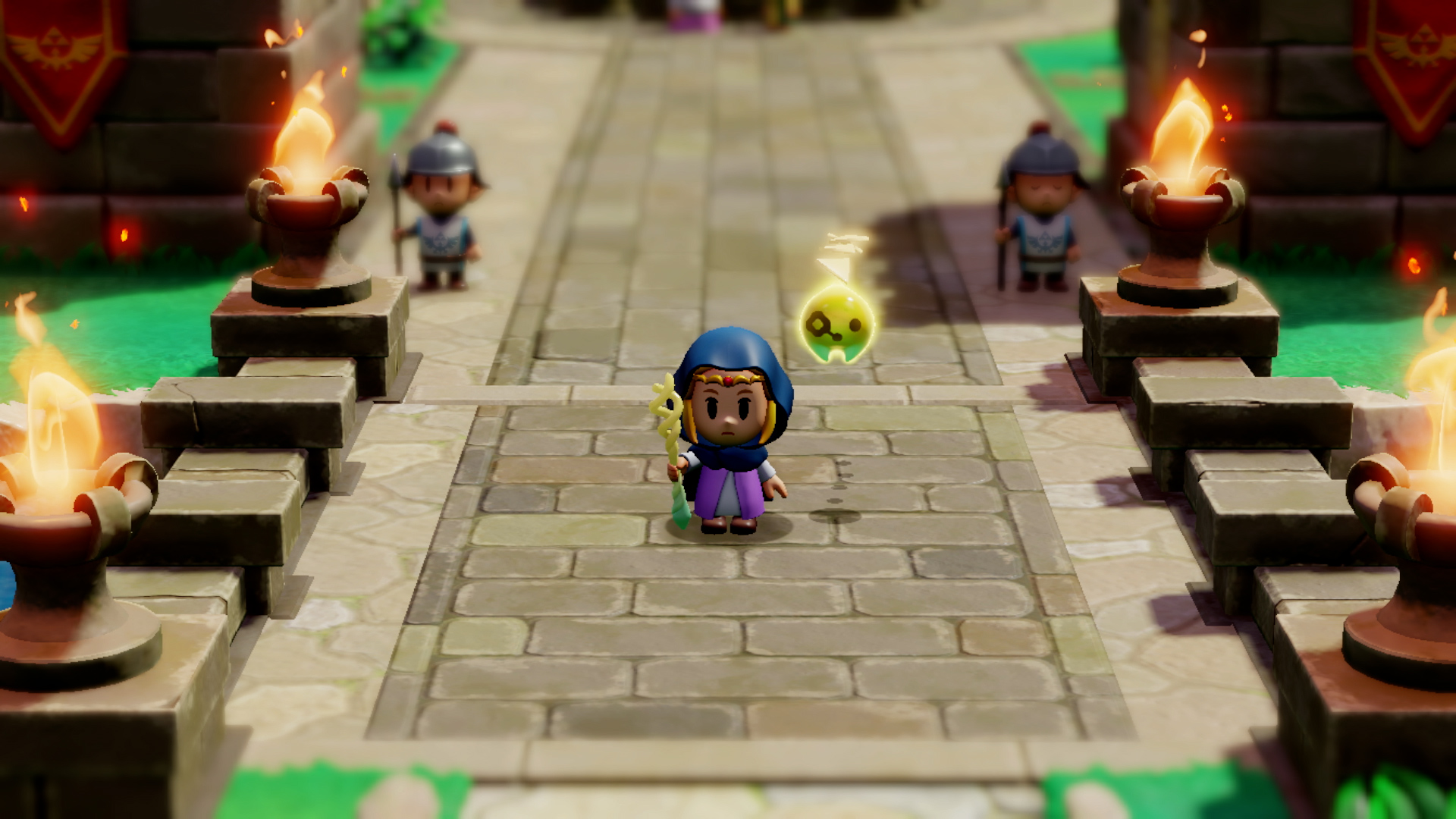The imaginative realm of Nintendo’s The Legend of Zelda: Echoes of Wisdom commenced on the drawing board with an original concept that echoed Mario Maker’s gameplay. The iconic Zelda producer, Eiji Aonuma, alongside game directors Tomomi Sano and Satoshi Terada, divulged an intriguing backstory of the game’s inception in the first part of their “Ask the Developer” series.
The game, Echoes of Wisdom, presents gamers with an opportunity similar to Mario Maker. As Zelda, players are bequeathed a magical instrument enabling them to replicate and position various entities within the game, a brainchild of both Nintendo and Grezzo, the innovative studio responsible for 2019’s remake of Link’s Awakening.
Before Echoes of Wisdom was fully conceived, dedicated Grezzo employees presented Aonuma with their envisioned concepts for the forthcoming Zelda installment. The result? A unique blend of old-school top-down and contemporary side views, with gameplay emphasizing a “copy-and-paste” approach. Aonuma further encouraged developers to explore and integrate more free-roaming possibilities into the game design.
Aonuma explained, “Having worked on games in the Legend of Zelda series over the years, we started to feel that fans may not continue playing this franchise unless they can think independently and try various things freely on their own, rather than following a set path.” This sentiment led to the development of a game where players could craft their own dungeons. Aonuma relished this inventive concept, but steered Echoes of Wisdom away from its initial approach as the evolution continued.
The journey through early stages of development comprised attempts to balance gameplay with a creative mix of “copy-and-paste” mechanics and combat strategies. Satoshi Terada explained, “In one approach, Link could copy and paste various objects, such as doors and candlesticks, to create original dungeons. During this exploration phase, this idea was called an ‘edit dungeon’ because players could create their own Legend of Zelda gameplay.”
In response to this, Aonuma realized that it was enjoyable allowing players to create dungeons and engage others to test it. However, he also foresaw the fun of integrating copied objects in the game field and employing them in enemy combat, hence cultivating the innovative gameplay with ‘echoes’. This strategy marked a turn in gameplay, moving away from an initial focus on dungeon creation towards utilising replicated items to advance player’s own adventures.
Ultimately, developers struck a balanced compromise between interactive environment involvement, utilizing “echoes” to propagate items, and refrained from burdening players with creating full dungeons. This creative approach aligns with Zelda games that capitalise on freer and more inventive play, with enough guiding pointers and assurances to cultivate player creativity.
Aonuma expressed during an interview that not everyone yearns for the completely blank canvas found in Mario Maker. While this approach may suit some, the Zelda series thrives better with a measured mix of design freedoms and suggested pathways. He maintained this opinion ever since the release of Tears of the Kingdom, establishing the characteristically temperate level of creativity in Echoes of Wisdom.
Anticipating how much creativity The Legend of Zelda: Echoes of Wisdom will offer its fans? Get ready to embark on this fresh adventure when the game releases on the Nintendo Switch on Sept. 26.

Leave a Reply